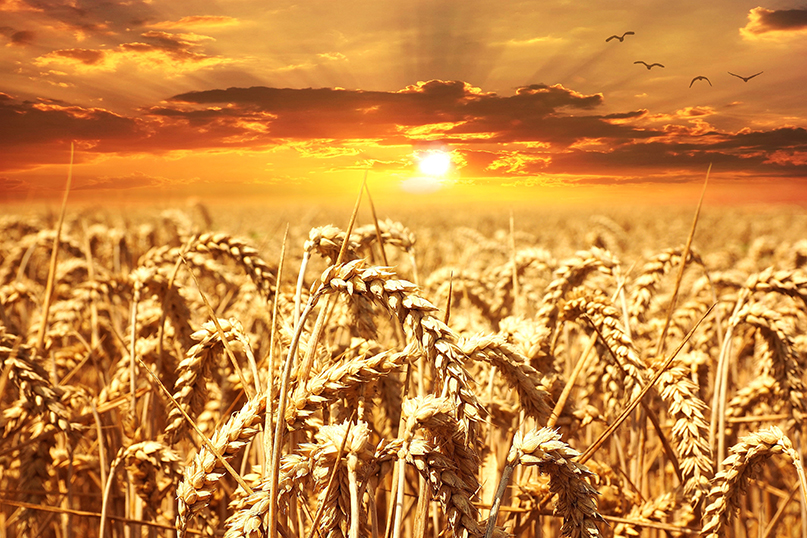
Shavuot – the Festival of Weeks – begins at sundown Sunday, May 16 and ends at sundown Tuesday, May 18
Seven ways to celebrate a meaningful Shavuot
(JNS) At sundown on Sunday, May 16, Jews around the world will start the two-day holiday of Shavuot, celebrated for one day in Israel and two days in the Diaspora (see p.13).
Also known as the Festival of Weeks because it marks the completion of the counting of the Omer period – which is 49 days long, or seven weeks of seven days – Shavuot is one of the Jewish calendar’s shalosh regalim – one of three pilgrimage holidays.

Unlike the other two pilgrimage festivals – Passover, which is marked through the retelling of the Exodus story at the seder, and Sukkot, which is celebrated by building a hut or sukkah outside one’s home – there is no definitive ritual associated with Shavuot in the text of the Torah. As such, many Jews struggle to connect with the holiday, which has several other names, including “Chag HaKatsir,” meaning the Harvest Festival.
But despite its undefined nature, Shavuot is a most significant holiday. After all, it is when we received the Ten Commandments, God’s greatest present to the Jewish people.
In that spirit, here are seven ways to infuse some meaning and minhag (tradition) into your Shavuot this year:
1. Food
It is traditional on Shavuot to eat dairy foods. Some believe this is because the scripture compares Torah to “honey and milk… under your tongue” (Song of Songs 4:11). Another explanation is that when the Israelites received the Torah for the first time, they learned the kosher dietary laws and didn’t immediately have time to prepare kosher meat, so they ate dairy instead. Among the most popular dairy foods that are eaten on Shavuot are blintzes and cheesecake.
2. Games
For families with young children, games are a great way to educate youth about the messages of Shavuot. Try playing some simple counting games with the kids. You can count up to 49 of anything: 49 ways Mommy loves you, 49 things you are grateful for,” she says. For slightly older children, try playing a Jewish commandments version of Pictionary®, in which before the holiday children draw their favorite commandment or commandments on a notecard. The cards are mixed up and put into a box or bag. Then, the family gets together, members draw picture cards, and someone acts out each commandment while participants guess which commandment it is and why it is important.
3. Guests
On the second day of Shavuot, we read the Book of Ruth, the story of the first Jew by choice. This is also a story of welcoming the stranger and inclusivity. Shavuot is the perfect holiday for inviting new friends over for a meal, or for opening one’s home to people who are interested in learning more about Jewish traditions.
4. Jewish learning
Taking part in a tikkun leil Shavuot – a night of Jewish learning – is another Shavuot custom. Many traditional Jews stay up all night on the first night of the holiday to study Torah. Today, many non-observant Jews aren’t affiliated with a particular synagogue. As such, hosting a communal night of learning (not affiliated with any particular religious sect or institution) may be just the think to draw in a more diverse mix of Jewish learners.
For people who live in smaller communities without a formal Shavuot learning event, there are multiple online sources that can be used to organize a grassroots evening of learning at an individual’s home. And Jewish learning doesn’t have to be Biblical texts. … Torah is more than the Five Books of Moses. It could be liberal values or social justice or just a discussion about Jewish identity or Jewish laws.
5. King David birthday party
Tradition has it that King David, Ruth’s (as in the Book of Ruth) great-grandson, was born and died on Shavuot. So why not host a King David birthday party – featuring decorations, cake, ice cream, and gifts. More than just a fun afternoon, the party can used s a learning tool; a springboard into a historical discussion. Ask kids to think about what they would write on a card to King David? What would they want to ask him? What would he want for a present?
6. Nature
On Shavuot, it is customary to decorate our homes and synagogues with flowers and plants. Following this tradition of surrounding ourselves with the lushness of the natural world could add a lot of beauty to the day. Shavuot comes in the late spring or early summer, when the weather is perfect and the flowers are blossoming – the perfect time to connect with nature and appreciate the beauty of the world that God created for us.
7. Setting goals/reflections
A deeper reading of the Book of Ruth can transform Shavuot from simply another Jewish holiday into an opportunity to set goals and resolutions. Ruth believed in something (Judaism) and followed through on her belief. Her story really comes to life on Shavuot. She was open to the truth and therefore was willing to be honest with herself. For anyone searching and struggling, Ruth is a good role model for life.
Is Shavuot 1 or 2 days long?
By MJL Staff
If you live in the land of Israel, Shavuot is a one-day holiday. Everywhere else it’s celebrated for two days (except by the Reform movement, which keeps only one). That’s not just Shavuot, either.
Shavuot, like other Jewish holidays, is lunar – calculated according to the moon. Each month begins on the day of a new moon, when the tiniest crescent of the moon becomes visible after the moon has disappeared altogether. Because the moon cycle is approximately 29 1/2 days long, in some months the next new lunar month begins 29 days after the previous one and in other months it is 30 days.

Astronomers can now predict the exact day and time of the new moon. In antiquity, the date of the new moon could not be calculated in advance–it had to be observed. Furthermore, according to Jewish law, it had to be “officially” observed. That is, the Sanhedrin, the Jewish governing body in the Land of Israel, had to receive sworn testimony from two eyewitnesses and then proclaim a new month.
But what does this have to do with observing Shavuot for one day in Israel and two days in the Diaspora?
Once the Sanhedrin received testimony of the new moon and declared a new month in the Land of Israel, the message of the new moon was delivered to Jewish communities beyond the Land of Israel so that all Jews would be on synchronized calendars.
According to the Mishnah, the rabbis had a rather clever system of delivering the message about a new month: signal fires atop mountains. The idea was that once a new month was declared, a fire would be lit atop a mountain in Jerusalem, and then another one atop a neighboring mountain, and so forth –spreading the message of the new month quickly across the landscape.
But this system did not work for very long. The Mishnah tells us that the Samaritans, a rival religious sect, sought to disrupt the fire signals by lighting their own fires to confuse the Jews. So, in the end, the month had to be declared by horse and rider. That could take a long time, and by the time the message got to Diaspora Jewish communities (particularly with regards to holidays that fall in the first day of the month, like Rosh Hashanah), it was too late – the holiday would have already passed!
Thus the Diaspora communities took to hedging their bets by celebrating major holidays for two days rather than one to ensure that they would celebrate it on the same day as their fellow Jews in the Land of Israel. Today, in honor of that tradition, Jewish communities outside the Land of Israel continue to celebrate major holidays for two days, even though we have the technological capability to synchronize our calendars well in advance.
This article first appeared on My Jewish Learning.








 Southern New England Jewish Ledger
Southern New England Jewish Ledger









